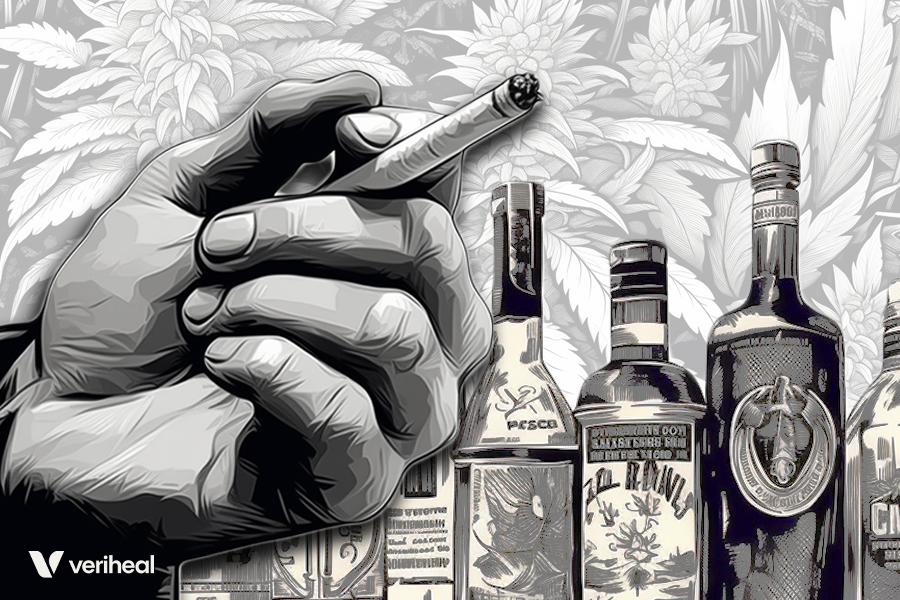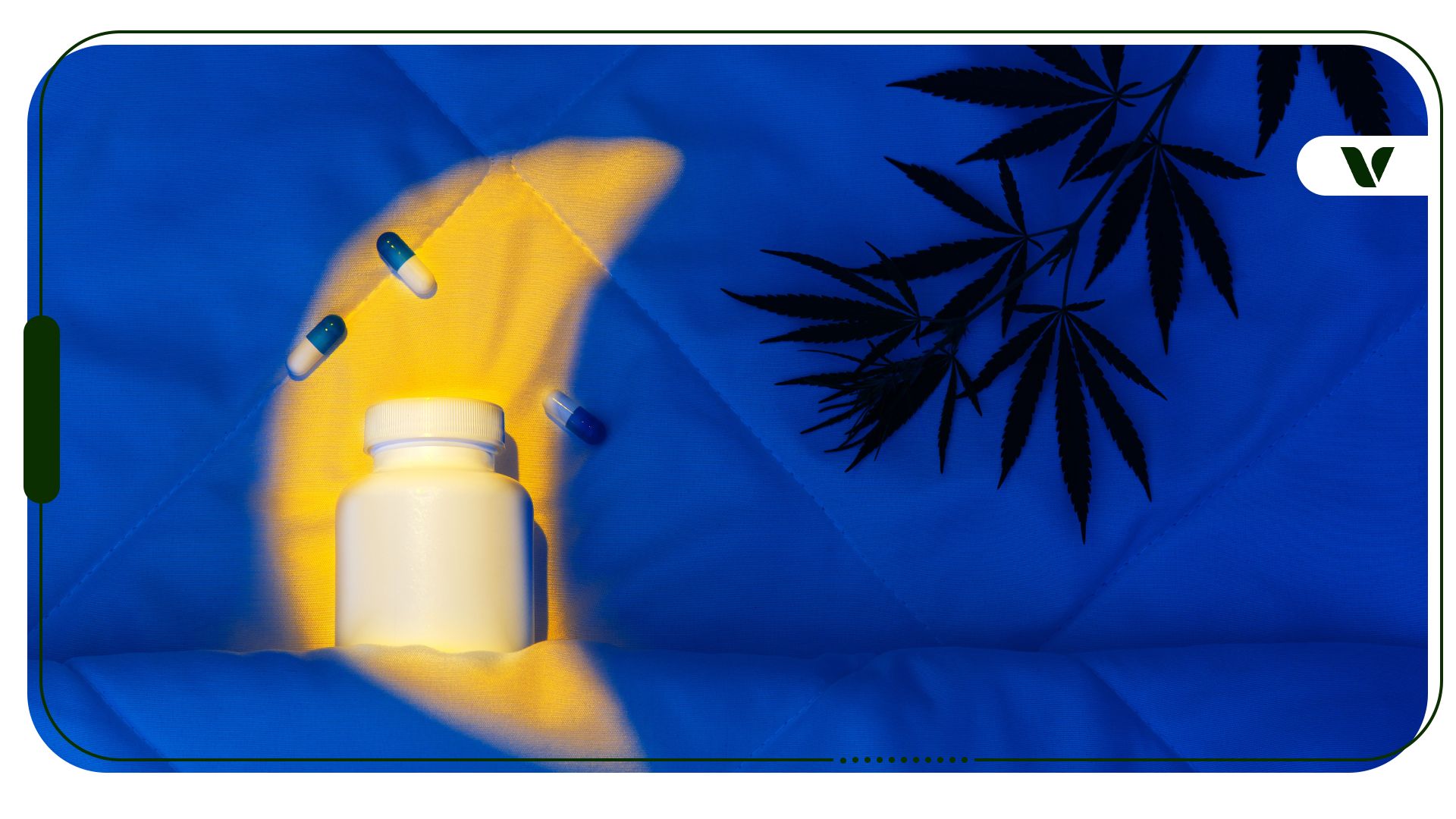In the midst of ongoing debates about cannabis legalization, a new survey by the American Psychiatric Association (APA) and Morning Consult offers intriguing insights. It compares public perceptions of cannabis’ dangers and addictiveness with those of cigarettes, alcohol, opioids, and vapes.
In addition, the survey also extended its investigation into a non-conventional but omnipresent aspect of our lives – technology. Here’s what the study found about the shifting attitudes molding the future of substance use and technology in American society.
What the Survey Says About Perceptions Surrounding ‘Dangerous’ Products
To ensure the reliability of the findings, the APA and Morning Consult developed a comprehensive methodology for the survey. They conducted interviews with 2,201 adults over a span of three days, providing a margin of error of +/- 2 percentage points.
In terms of perceived danger, the survey findings revealed some compelling insights. When asked about cannabis, only 38% classified it as “very” or “somewhat unsafe,” a relatively low figure compared to the perceptions around other substances.
According to the survey:
- 84% of survey participants perceived cigarettes as unsafe.
- Alcohol was labeled as unsafe by 64% of respondents.
- Prescription opioids were deemed unsafe by 66% of those surveyed.
- Non-prescription opioids were seen as unsafe by 75% of participants.
- Vapes were perceived as unsafe by 76% of respondents.
Interestingly, technology was the only category deemed less dangerous than cannabis, with just 23% of respondents labeling it as “very” or “somewhat unsafe.”
What the Survey Says About Perceptions Surrounding ‘Addictive’ Products
The survey highlights distinct views on the addictiveness of various substances and technology. Regarding cannabis, 64% of respondents believe it can be addictive. However, this figure is lower compared to all other categories:
- 87% for cigarettes
- 84% for alcohol
- 83% for prescribed opioids
- 74% for non-prescribed opioids
- 81% for vapes
- 75% for technology
The APA President, Petros Levounis, commented on these findings, affirming the successful communication of the dangers and addictiveness of cigarettes. He also pointed out the necessity of raising awareness about the potential addictiveness of other behaviors, such as alcohol consumption and technology use, to prevent misuse. These views underscore the continued need for education about the potential addictive properties of both substances and technology.
Understanding Addiction
The survey sheds light on respondents’ perspectives on the causes of addiction and its potential solutions. The responses highlight the complexity of views:
- A significant 47% of participants perceived addiction as a result of “personal weakness,” indicating the ongoing stigma attached to substance use disorders.
- In contrast, a more significant proportion, 76%, recognized addiction as a medical condition, demonstrating increased understanding and compassion towards those facing such challenges.
- Equally, 76% believed that addiction is preventable and treatable, underscoring the value of early intervention and treatment programs.
- Impressively, 71% of Americans think they would know how to support a loved one struggling with addiction, suggesting a broad societal awareness of how to address this issue.
Awareness of Opioid Overdose Antidote
To address the grim reality of opioid addiction, the survey probed the awareness of naloxone, a potentially lifesaving drug that can counteract the effects of an opioid overdose.
Results showed that 58% of respondents were aware of naloxone, but only 35% reported that they would know where to access it in an emergency.
This disparity underscores the urgent need for more robust public education about the availability and application of naloxone. In 2022 alone, over 100,000 individuals lost their lives to opioids, a sobering figure that amplifies the necessity of widespread naloxone accessibility and knowledge.
Survey Shows Shifting Public Perceptions
In line with broader societal changes, the survey results spotlight an undeniable shift in public perception, particularly concerning cannabis and alcohol. Once stigmatized, cannabis is now viewed as less dangerous and less addictive compared to traditional substances such as alcohol. This evolution in public perception can largely be attributed to the growing wave of cannabis legalization for both medical and recreational use across the country, which has normalized its consumption to some extent. Furthermore, concerted efforts in public education have shed light on the potential harms of alcohol, contributing to a heightened sense of concern about its use.
Cannabis as an Alternative to Alcohol and Prescription Medication
As the stigma around cannabis dissipates and recognition of its potential benefits grows, more and more people are exploring it as a viable substitute for alcohol or certain medications. An example of this shift was evident during “Dry January,” a popular public health campaign encouraging alcohol abstinence for the month.
According to a survey conducted during this period, 1 out of 5 people who participated in ‘Dry January’ reported using cannabis to help them abstain from alcohol. This rising inclination towards cannabis over traditional substances further testifies to the changing attitudes and behaviors around substance use.
Survey Says People More Likely to Admit to Cannabis Use Than Ever Before
In another surprising revelation, recent poll data shows a change not just in the perception of cannabis use but also in its open admission. According to this poll, more Americans are now willing to admit that they use cannabis by smoking it or consuming cannabis-infused edibles than those who confess to having smoked cigarettes in the past week.
This paradigm shift points towards a decreasing stigma associated with cannabis use and a potential uptick in its acceptance. This candidness around cannabis use, contrasted with the declining admission of cigarette smoking, could be another indicator of the evolving landscape of substance use in America.
Final Thoughts
In summary, the survey conducted by the American Psychological Association and Morning Consult reveals shifting American views on the relative dangers and addictiveness of substances and technology, with a significant spotlight on cannabis. As it is perceived to be less dangerous and addictive than substances like alcohol, opioids, cigarettes, and even technology, cannabis is seen more and more as a preferable choice.
Legalization efforts and public education campaigns are driving this shift. However, the continued need for effective public health measures, as evidenced by the inconsistent awareness and accessibility of naloxone, is still apparent. As these views continue to evolve, they will shape future policies and societal trends, making it crucial to monitor these shifts in the landscape of substance use and addiction.
Author, Share & Comments








